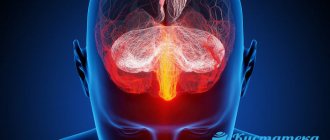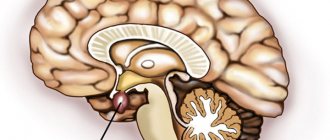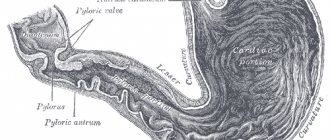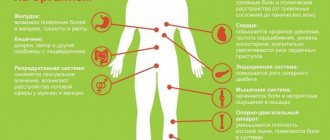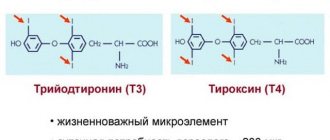General information
Releasing hormones are a class of peptide hormones of the hypothalamus, the general property of which is stimulation or inhibition of the synthesis and secretion into the blood of certain tropic hormones of the anterior pituitary gland. Synonyms for these biologically active compounds are releasing factors, liberins.
The term “hormone” was first introduced by E. Starling in 1905; translated from Greek it means “I move or “excite”. A hormone is a special biologically active substance produced by specialized endocrine organs or tissues, entering the blood or lymph and affecting the functions of the body outside the place of its formation in small concentrations.
Hormones are an integral part of life. They are created by eight different parts of the endocrine glands. The different parts include the adrenal glands, hypothalamus, pancreas, parathyroid gland, pituitary gland, reproductive glands and thyroid gland. Together, these glands produce dozens of chemical messengers called hormones and release them directly into the bloodstream that surrounds the glands. Using chemicals, the endocrine system regulates a number of functions, including metabolic rate, growth rate, and how the body develops.
Releasing hormones (or otherwise releasing factors, liberins, statins) are a class of peptide hormones of the hypothalamus, the common property of which is the implementation of their effects through stimulation of the synthesis and secretion into the blood of certain tropic hormones of the anterior pituitary gland.
The hypothalamus is small, located below the thalamus and just above the brain stem. The hypothalamus, which is the most important link between the nervous and endocrine systems, already shows the incredible importance of its proper functioning. Thanks to this part of the brain, the following vital functions of the body are regulated:
- Hunger
- Thirst
- Regulating body temperature
- Change of sleep and wakefulness
Attached to the hypothalamus, the pituitary gland is a reddish-gray, pea-sized body that stores hormones from the hypothalamus and releases them into the blood. The pituitary gland consists of an anterior lobe and a posterior lobe, each of which has different functions.
The main role of releasing hormone is to stimulate the pituitary gland to produce and release growth hormone into the blood. It then acts on virtually every tissue in the body to control metabolism and growth. Growth hormone stimulates the production of insulin-like factor in the liver and other organs, and this affects the body's tissues, also controlling metabolism and growth. The action of growth hormone releasing hormone on the pituitary gland is counteracted by somatostatin, a hormone produced by the hypothalamus that prevents the release of growth hormone.
The concentration of releasing hormones directly affects the functioning of the pituitary gland, which, in turn, affects the following organs:
- Adrenal glands
- Ovaries
- Thyroid
- Testicles
All these substances have high biological activity.
Currently, 10 releasing hormones have been found:
Growth hormone releasing factor
| Somatoliberin | |
| Designations | |
| Symbols | GHRH; GRF, GHRF |
| Entrez Gene | 2691 |
| H.G.N.C. | 4265 |
| OMIM | 139190 |
| RefSeq | NM_021081 |
| UniProt | P01286 |
| Other data | |
| Locus | 20th chronicle, 20p 12 or q11.2-q12 |
| Information on Wikidata? | |
Somatotropin-releasing hormone
, or
somatrelin
,
somatoliberin
,
somatotropin-releasing factor
, abbreviated
SRG
or
SRF
- one of the representatives of the class of releasing hormones of the hypothalamus.
SRH causes increased secretion of growth hormone and prolactin by the anterior pituitary gland.
Like all releasing hormones of the hypothalamus, SRH is a polypeptide in chemical structure. Somatoliberin is synthesized in the arcuate (arcuate) and ventromedial nuclei of the hypothalamus. The axons of the neurons of these nuclei end in the area of the median eminence. The release of somatoliberin is stimulated by serotonin and norepinephrine.
The main factor that implements negative feedback in the form of inhibition of somatoliberin synthesis is somatotropin. The biosynthesis of somatoliberin in humans and animals occurs mainly in the neurosecretory cells of the hypothalamus. From there, through the portal circulatory system, somatoliberin enters the pituitary gland, where it selectively stimulates the synthesis and secretion of somatotropin. Biosynthesis of somatoliberin occurs in other extra-hypothalamic areas of the brain, as well as in the pancreas, intestines, placenta, and in certain types of neuroendocrine tumors.
The synthesis of somatoliberin increases during stressful situations, during physical activity, and also during sleep.
| Endocrine system: peptide and steroid hormones | |
| Endocrine glands | |
| Posterior pituitary gland |
|
| Middle lobe of the pituitary gland |
|
| Anterior pituitary gland |
|
renin
peritubular cells
EPO calcitriol prostaglandin Heart natriuretic peptide ANP, BNP
| This is a draft article on endocrinology. You can help the project by adding to it. |
To improve this article it is desirable:
Please, after fixing the problem, remove it from the list of parameters. After eliminating all the shortcomings, this template can be deleted by any participant. |
The structure and functioning of the pituitary gland
The pituitary gland is a gland located inside the brain, about the size of a pea. It is located in the sella turcica, a bony cavity at the base of the skull, just below the brain in the nasal cavity, behind the nasal bridge.
Although the pituitary gland looks like a single gland, it consists of two separate parts - the posterior and anterior lobes. The pituitary gland is attached to the brain and controls its activity.
The anterior part of the pituitary gland consists of glandular cells connected to the brain by very short blood vessels. The posterior part of the pituitary gland is integral with the brain and secretes hormones directly into the body's circulatory system.
The structure of the pituitary gland
The pituitary gland is called the “master gland”, using hormones to control many different processes. It determines the needs of functioning systems and sends signals to various organs and glands to operate and maintain their self-regulation (homeostasis).
For example, prolactin, produced by the pituitary gland, regulates milk production in women. It also secretes hormones that act on the adrenal glands, thyroid gland, ovaries in women and testes in men, which in turn produce other hormones.
Through the production of its hormones, the pituitary gland regulates metabolism, growth, puberty, reproductive functions, blood pressure and many other vital physiological processes.
The anterior lobe of the pituitary gland produces the following hormones:
- Adrenocorticotropic, stimulating the adrenal glands to produce steroids, mainly cortisol, as well as growth hormone, which regulates overall development, metabolism (metabolism) and the composition of body tissues.
- Prolactin, which activates milk production.
- Thyrotropic, stimulating the thyroid gland to produce its hormones.
- Luteinizing and follicle-stimulating, acting on the ovaries in women and testes in men, activating the production of sex hormones.
Liberins and statins: what are they responsible for?
Liberins (releasing, stimulating) and statins (inhibiting, slowing) - whose main purpose is to control the release of other hormones, by stimulation or inhibition.
For example, thyrotropin-releasing hormone (TRH) is released from the hypothalamus in response to decreased levels of thyroid stimulant (TSH) secretion from the pituitary gland. TSH, in turn, is controlled by the hormones T4 and T3 produced by the thyroid gland.
Diagram of the hypothalamic-pituitary system
The main actions of releasing hormones produced by the hypothalamus are as follows:
- thyrotropin-releasing hormone (thyrotropin-releasing hormone) tells the pituitary gland to release more thyrotropin;
- growth hormone-releasing hormone (somatoliberin) - more somatotropin;
- gonadotropin-releasing hormone (gonadotropin-releasing hormone) - gonadotropin;
- corticotropin-releasing hormone (corticoliberin) - corticotropin.
The main actions of inhibitory hormones secreted by the hypothalamus are as follows:
- dopamine (prolactostatin) informs the pituitary gland about the need to inhibit prolactin, which as a mediator influences many body systems;
- somatostatin - inhibit somatotropin and inform the gastrointestinal tract about the need to inhibit various gastrointestinal hormones;
- follistatin - inhibit follicle-stimulating hormone, which has many different systemic effects.
A blood test has been ordered, but you have a cold? Is it possible to take a blood test if you have a cold? Read carefully.
You can read about the structure and functions of the pituitary gland.
You can read information about the treatment of pituitary adenoma and prognosis.
Hypothalamic releasing factors (liberins)
Corticotropin releasing hormone (CRH)
It is a peptide hormone involved in the response to stress.
Its main function is to stimulate the pituitary gland's synthesis of adrenocorticotropic hormone.
CRH deficiency has numerous and potentially fatal metabolic consequences, including hypoglycemia.
In addition to being produced in the hypothalamus, it is also synthesized in peripheral tissues such as T lymphocytes and is highly expressed in the placenta. In the placenta, CRH is a marker that determines the duration of pregnancy and the timing of delivery.
A rapid increase in circulating levels of the hormone occurs at the onset of labor, and in addition to its metabolic functions, CRH may act as a trigger for this physiological process.
Somatotropin-releasing hormone (somatoliberin)
Releases growth hormone (GH), causing the pituitary gland to secrete it into the blood.
GH affects almost all tissues of the body, controlling a number of physiological functions and processes in the body.
Insulin-like growth factor No. 1 is a hormone produced in the liver and other organs in response to the production of GH, and acts in many tissues, causing metabolic processes and growth in them.
In addition to influencing GH production, somatoreliberin also affects sleep, food intake, and memory in humans.
A tumor of the anterior pituitary gland, prolactinoma, is more often found in women. The tumor is benign and treatable if detected and treated in a timely manner.
It’s not for nothing that doctors examine the tongue when examining a patient. Based on the condition of the tongue, one can suspect the presence of certain pathologies. Read about how to determine the diagnosis by language.
Thyrotropin-releasing hormone (thyrotropin-releasing hormone)
Controls the secretion of thyroid-stimulating hormone from the anterior pituitary gland and is widely distributed in the central nervous system, being a neurotransmitter (modulator) of neuron activity in the cerebellum.
Thyroliberin plays a significant role in energy self-regulation (homeostasis), eating behavior, thermogenesis and autonomic regulation of the body.
Gonadotropin-releasing hormone
Produced by nerve cells in the hypothalamus and released into a tiny bloodstream that carries it to the pituitary gland, where it triggers the production of follicle-stimulating hormone and luteinizing hormone (LH and FSH).
They, in turn, enter the general bloodstream and act on the testes and ovaries, initiating and maintaining their reproductive functions.
LH and FSH also control the levels of hormones produced by the reproductive system and play an important role in controlling the production of sperm in men and the maturation and release of eggs during each menstrual cycle in women.
Biochemical and physiological studies of the hypothalamus prove that liberins and statins play a decisive role in regulating the production of pituitary hormones. Clinical studies also show that hypothalamic hormones may be of practical importance in the diagnosis and treatment of various diseases in humans.
Neurohormones that activate the release of pituitary tropic hormones (liberins)
1. Corticotropin-releasing hormone (CRH, or corticotropin-releasing factor CRF, or corticoliberin), stimulates the release of adrenocorticotropic hormone ACTH
2. Thyrotropin-releasing hormone (TRH, or thyrotropin-releasing factor TRF, or thyrotropin-releasing hormone). Enhances the release of the thyroid-stimulating hormone TSH and, to a lesser extent, prolactin (hormones of the anterior pituitary gland).
3. Gonadotropin-releasing hormone (GnRH, or gonadotropin-releasing factor GnRF, or gonadotropin-releasing hormone, or luliberin). Stimulates the release of luteinizing hormone LH and, to a lesser extent, follicle-stimulating hormone FSH by the anterior pituitary gland. It has now been proven that the regulation of LH and FSH is carried out by one neurohormone GnRH, and the existence of neurohormones luliberin (luteinizing hormone releasing hormone, LH-RH). and folliberin (follicle stimulating hormone releasing hormone, FSH-RG) has been refuted.
4. Somatotropin-releasing hormone (SRH, or somatotropin-releasing factor SRF, or somatoliberin). Stimulates the release of somatotropic hormone STH and prolactin by the anterior pituitary gland.
The existence of prolactin-releasing hormone (PRH, prolactoliberin) and melanocyte-stimulating hormone-releasing hormone (MRG, melanoliberin) was also not detected. Research in the field of identifying the mechanisms of hypothalamic regulation of pituitary melanocyte-stimulating hormone continues.
Statins and liberins of the hypothalamus
Liberins and statins are releasing hormones, the concentration of which determines the activity of the hypothalamus. This part of the brain is responsible for the functioning of the endocrine glands: thyroid, adrenal glands, testes and ovaries. Once in the human bloodstream, liberins and statins begin to be distributed between tissues. There they produce the development of metabolic processes at the cell-membrane level, which is why multiple hormonal changes occur.
Today, scientists include in the group of liberins and statins peptides that are produced
small cell nuclei. They are stored in the median eminence of the neurohypophysis. They can also accumulate in small amounts on the cerebral cortex. The amount of liberins and statins in the blood depends on the content of effector substances.
A certain group of neurons in higher nerve centers is responsible for the amount of liberins and statins in the blood, among which are adrenergic, cholinergic and dopaminergic. Hormones of the secondary endocrine glands - the adenohypophysis - can provoke a stop in their production. This action is explained by feedback; for this reason, a person does not feel any negative consequences.
The hypothalamus, endocrine glands and adenohypophysis are responsible for the synthesis of hormones necessary for the normal functioning of the body. The amount of liberins and statins produced is under complete control from the cerebral cortex. Excessive activity of the liberic system, reticular formation, thalamus and peripheral receptors can provoke an increase in the concentration of these substances in the blood.
Without liberins and statins in the body, regulatory function would be impossible.
They are so different - hypothalamic hormones
What are the hormones of the hypothalamus?
Corticoliberin is a hormone produced by the hypothalamus. This substance is responsible for the manifestation of anxiety.
Gonadotropin-releasing hormone is a natural hormone, under the influence of which the production of gonadotropins is enhanced.
What substances does the organ produce?
The hypothalamus is one of the most important means of the endocrine system, responsible for the production of hormones.
The elements synthesized by the hypothalamus are extremely necessary for the body because they are peptides involved in various metabolic processes in the systems.
The nerve cells present in the hypothalamus ensure the release of all the necessary substances to ensure the normal functioning of the body.
Such elements are called neurosecretory cells. They perceive impulses transmitted by various parts of the nervous system. Elements are released through certain axovasal synapses.
The hypothalamus produces releasing hormones, so-called statins and liberins. These substances are essential to ensure the normal functioning of the pituitary gland.
Nowadays, only some substances secreted by the hypothalamus are the most studied by medicine.
Gonadotropin-releasing hormone
GnRH is involved in the production of sex substances. In the female body, it is these components that take part in the formation of the natural course of menstruation.
Responsible for libido. GnRH is responsible for the process of releasing a mature egg.
GnRH is extremely necessary for a woman, because with its deficiency, the development of infertility cannot be ruled out.
Somatoliberin
The substance is clearly produced in childhood and adolescence and is responsible for normalizing the growth process of all organs and systems of the body.
This hormone must be released in normal quantities, because the full development and formation of the child depends on it.
As a result of a lack of this hypothalamic hormone, dwarfism can form.
Corticotropin releasing hormone
Corticoliberin is responsible for the production of adrenocorticotropic substances by the pituitary gland. If the component is not produced in the required volume, adrenal insufficiency occurs.
Corticorelin is a substance responsible for the severity of anxiety; at high concentrations, a person becomes overly excited.
Prolactoliberin
It is actively produced during gestation and is contained in the body of a nursing mother throughout the entire period of lactation.
This releasing factor affects the process of normal prolactin production, which contributes to the formation of a sufficient number of ducts in the mammary gland.
Prolactostatin
This subclass of statins is produced by the hypothalamus and inhibits the production of prolactin. Prolactostatins:
- dopamine;
- somatostatin;
- melanostatin.
Each of them has a suppressive effect on the tropic hormones of the pituitary gland and hypothalamus.
Melanotropin releasing hormone
Melanoliberin takes part in the process of melanin production and the division of pigment cells. It influences the elements of the PRD of the pituitary gland.
Plays a great influence on human behavior in neurophysiological terms. Used for the treatment of depression and parkinsonism.
Functions of liberins and statins
Liberins and statins are substances that are combined into a common group of releasing factors. They are antagonists that are produced by the organisms themselves. Liberins stimulate, and statins suppress and remove pituitary hormones from the body. They enter this part of the brain through the collar vein.
Today, experts identify 10 such substances, which are found in a certain amount in the blood of every person. Without liberins and statins, the body will not be able to function and live normally; a change in one indicator instantly affects a person’s health.
The names of liberins and statins are produced from two parts. The first part contains the names of the hormone that is produced in the pituitary gland, that is, the target cell, and the second contains liberin or statin. Based on the second part, the doctor can easily determine what direction this liberin or statin is.
In total, these substances, despite their different actions, are produced in one place - in the middle nucleus of the hypothalamus. Liberins and statins were discovered in the mid-twentieth century by scientists Thijman and Shelley, for which they were awarded the Nobel Peace Prize in 1977.
Releasing factors are substances that are combined into a group of hypothalamic hormones. They also include small peptides, the center of production of which is considered to be the nuclei of the hypothalamus.
Their main function is to adjust the amount of hormones produced by the adenohypophysis. If the body produces insufficient quantities of liberins and statins, persistent disorders will occur that will lead to irreversible consequences.
Today, experts identify 10 types of such substances: 7 of them are liberins, 3 are statins.
They have the following characteristics:
- Somatolic liberin - accelerates and increases the production of growth hormone, consists of 44 different amino acids.
- Thyroid liberin – increases the production of prolactin and thyrotropin, which are responsible for the health of the thyroid gland. Has a powerful antidepressant effect.
- Prolactoliberin - increases the amount of lactotropin produced, is responsible for the functioning of the testicles or ovaries.
- Corticoliberin - increases and accelerates the production of ACTH, has a powerful effect on the cardiovascular, nervous, immune, reproductive and endocrine systems. Consists of 41 different polypeptides.
- Folliberin - accelerates the production of follicle-stimulating hormone, which is responsible for the normal functioning of leukocytes and the production of phagocytes.
- Gonadotropin-releasing hormone - accelerates the production and synthesis of follicle-stimulating and luteinotropin. They are necessary for the normal functioning of the hypothalamus and reproductive system. This liberin consists of 10 independent peptides.
- Melanostimulating liberin - promotes the production of the required amount of melanotropin; it is a pentapeptide in nature.
- Prolactostatin is dopamine and reduces the production of lactotropin. It is responsible for the normal contraction of the heart muscle.
- Melanostatin – activates behavioral reactions and has an anti-opioid effect. In synthetic form it can be used as a powerful antidepressant.
- Somatostatin is a substance that is formed in the pancreas, outside the hypothalamus. It promotes the formation of ACTH, STH, TSH - hormones necessary for the thyroid gland. Somatostatin is made up of 14 different amino acids.
The amount of liberins and statins in the human body is regulated through the production of certain hormones that enter the blood. The liberins and statins themselves, produced by the cells of the hypothalamus, move throughout the body through axonal endings, or the median eminence.
After this, they enter directly into the capillaries, the blood of which delivers them to the veins. These veins are directed to the adenohypophysis, where they also break up into millions of small capillaries. This is how the hypothalamic-pituitary portal system is built.
Liberino-statin endocrine regulation has a high degree of hierarchy. The secretion of pituitary hormones is usually caused by changes in the concentration in the blood of other substances produced by the peripheral endocrine glands. Liberins and statins are substances necessary for the regulatory function.
Share if it helped
Top ↑ Home
- Average frequency of the word “factors” per million uses: 92 times. Number of letters: 7.
- Forms of the word factors were searched: 10.
- The search took 0.013 seconds. Remember how often you look for what you can replace a word with? Add sinonim.org to your bookmarks to quickly search for synonyms, antonyms and sentences (press Ctrl+D), because a high-quality online dictionary of Russian synonyms will always come in handy.
Random words and phrases: sent, one by one, agility
Releasing hormones
The most important role in the regulation of the hormonal functions of the pituitary gland and peripheral endocrine glands belongs to the hypothalamus.
This is a kind of neuroendocrine organ that ensures the unity of nervous and endocrine processes in the body. The hypothalamus has nerve connections with the limbic system, reticular formation, cerebral cortex, and pituitary gland. Through the pituitary gland it is connected to other endocrine glands. Nerve cells of the hypothalamus form neurohormones, or releasing hormones (releasing factors).
The releasing hormones of the hypothalamus, which regulate the tropic functions of the adenohypophysis, are polypeptides in their chemical nature. The place of their production is the corresponding nuclei of the hypothalamus. The releasing hormones of the hypothalamus include somatoliberin and somatostatin, prolactoliberin and prolactostatin, luliberin, folliberin, corticoliberin, thyroliberin, melanoliberin, melanostatin, etc. The listed releasing hormones have high biological activity and lack species specificity. Many of them (TRG, Gn-RG, GR-RG) are synthesized chemically. The mechanism by which releasing hormones of the hypothalamus stimulate or inhibit the incretion of adenohypophysis hormones is associated with changes in the permeability of cell membranes, but has not yet been sufficiently studied. They are believed to accelerate the release of pituitary hormones and participate in their biosynthesis.
Due to their high resistance to the action of proteolytic enzymes, high activity and lack of species specificity, releasing hormones will obviously be widely used in animal husbandry and veterinary medicine.
Somatoliberin, or growth hormone-stimulating hormone-releasing hormone (GH-RH), and somatostatin, or growth hormone-inhibiting hormone-releasing hormone (GR-IG), are produced mainly in the area of the median eminence and mediobasal part of the hypothalamus. Analogs of GR-RG and GR-IG were synthesized. The action of releasing hormones on somatotropic cells of the pituitary gland is carried out with the participation of cAMP and cGMP. Changing the ratio of cAMP and cGMP in pituitary cells ensures the regulation of growth hormone incretion.
Prolactoliberin, or prolactin-stimulating hormone (PSH), and prolactostatin, or prolactin-inhibiting hormone (PIH), are produced in the medial preoptic and some other areas of the hypothalamus. These releasing hormones respectively stimulate and inhibit the secretion of prolactin by the adenohypophysis. Physiological stimulators of prolactin incretion are the act of sucking and changes in the concentration of estrogen in the blood. The main stimulator of PIG incretion is dopamine.
Gonadotropin-releasing hormone (GnRH), or gonadotropin-releasing hormone (Gn-RH), contains luliberin and folliberin. It is formed mainly by the mediobasal part of the hypothalamus. In 1971, the synthesis of Gn-RH was carried out. This hormone regulates the incretion of luteinizing hormone (LH) and follicle-stimulating hormone (FSH) in the pituitary gland. It is believed that the release of LH or FSH is due to the influence of sex steroids on the hypothalamus and pituitary gland. An increase in the level of estrogen in the blood increases the sensitivity of the pituitary gland to Gn-RH and is accompanied by the release of LH. Stimulation of LH release is carried out by estrogens in lower concentrations and appears earlier than stimulation of FSH release.
Currently, there are two hypotheses explaining the mechanism of action of GnRH. According to the first, Gn-RH changes the permeability of cell membranes of gonadotropes, causes their depolarization and increases the concentration of calcium ions, which activate the release of gonadotropins. The second hypothesis attaches the main importance to Gn-RH in the activation of the adenyl cyclase system and an increase in the concentration of cAMP in the cytosol of adenohypophysis cells. It is possible to combine these hypotheses.
Corticotropin releasing hormone (CRH) is a hormone that stimulates the secretion of adrenocorticotropic hormone (ACTH) by the pituitary gland. The main site of CRH synthesis is the mediobasal region of the hypothalamus. CRH is released from the hypothalamus in a cyclical manner through periodic releases. The mechanism of action of CRH on pituitary cells that secrete ACTH is not well understood.
Thyroliberin, or thyrotropin-releasing hormone (TRH), is isolated from the hypothalamus of sheep and pigs. It took 300,000 sheep hypothalamus to isolate one milligram of pure TRH. TRH has the same structure in all animals. The site of TRH production is the preoptic area of the hypothalamus.
TRH and thyroid hormones entering the blood regulate the thyrotropic function of the pituitary gland. TRH acts on the membrane receptors of thyrotropic cells at a certain concentration of Ca++ and Na+ in the extracellular fluid.
If you find an error, please select a piece of text and press Ctrl+Enter.
The hypothalamus is the central organ of the endocrine system. It is located centrally at the base of the brain. The mass of this gland in an adult does not exceed 80–100 grams.
The hypothalamus regulates the functioning of the pituitary gland, metabolism and the constancy of the internal environment of the body, synthesizing active neurohormones.
Hypothalamic releasing hormones
Releasing hormones are human neurohormones that are synthesized by the nuclei of the hypothalamus. They inhibit (statins) or stimulate (liberins) the production of pituitary tropic hormones. The work of the endocrine glands is activated, and the release of hormones by them is regulated. The higher parts of the central nervous system and the endocrine system are in close connection due to releasing hormones.
Functions of the hypothalamus
One of the important components of the endocrine system, responsible for the production of hormones, is the hypothalamus. Substances produced by the hypothalamus are hormones involved in the metabolic processes of the body.
The hypothalamus contains nerve cells that provide the production of essential substances that the body needs for normal functioning. These cells are called neurosecretory cells. Their task is to receive impulses that are transmitted by different parts of the nervous system. The release of elements occurs through axovasal synapses.
Releasing hormones produced by the hypothalamus, or, as they are otherwise called, statins and liberins, are essential for the normal functioning of the pituitary gland. By their chemical nature they are peptides. Thanks to chemical and nerve impulses, their synthesis occurs and they are transported to the pituitary gland by the blood through the hypothalamic-pituitary system.
Let's look at the most famous releasing hormones:
- Inhibiting the secretory function of the pituitary gland - we are talking about somatostatin, melanostatin, prolactostatin.
- Stimulating - we are talking about melanoliberin, prolactoliberin, folliberin, luliberin, somatoliberin, thyroliberin, gonadoliberin and corticoliberin.
The listed substances, or rather some of them, can be produced by other organs, not only the hypothalamus (for example, the pancreas).
Melanotropin-releasing hormone
The process of melanin production and the division of pigment cells is influenced by melanoliberin. It also affects the elements of the PRD of the pituitary gland.
It influences human neurophysiological behavior. Used to relieve depression and treat parkinsonism.
The main functions of liberins
These are releasing hormones of the hypothalamus. Perform regulatory functions. Gonadotropin-releasing hormones normalize the functioning of the reproductive system of women and men.
They are responsible for the reproduction of follicle-stimulating hormones and affect the functioning of the testicles and ovaries.
A component such as luliberin has a separating effect on ovulation, creating the possibility of conceiving a fetus.
In women who are indifferent to intimate life, luliberin and folliberin are produced in insufficient quantities.
There are also releasing factors related to the middle lobe of the hypothalamus, but their connections with elements of the pituitary gland and adenohypophysis have not been studied.
Effect of the gland on the pituitary gland
The hypothalamus produces special substances that regulate the hormonal activity of the pituitary gland. Statins reduce, and liberins increase, the synthesis of dependent elements.
Hormones from the hypothalamus enter the pituitary gland through the portal vessels.
Statins and liberins are called releasing hormones. The activity of the pituitary gland, and therefore the function of the peripheral endocrine glands (adrenal glands, thyroid, ovaries or testes), depends on their concentration.
Currently the following statins and liberins have been identified:
- gonadoliberins (folliberin and luliberin);
- somatoliberin;
- prolactoliberin;
- Thyroliberin;
- melanoliberin;
- corticoliberin;
- somatostatin;
- prolactostatin (dopamine);
- melanostatin.
The table shows releasing factors and their corresponding tropic and peripheral hormones.
| Hypothalamic hormone | Pituitary tropic hormone | Peripheral hormones |
| GnRH | Luteinizing hormone Follicle stimulating hormone | Estrogens Progesterone Testosterone |
| Somatoliberin Somatostatin | Somatotropin | – |
| Prolactoliberin Prolactostatin | Prolactin | – |
| Thyroliberin | Thyrotropin | Triiodothyronine Thyroxine |
| Melanoliberin Melanostatin | Melanotropin | – |
| Corticoliberin | Adrenocorticotropin | Cortisol |
Action of releasing hormones
GnRH activate the secretion of follicle-stimulating and luteinizing hormones in the pituitary gland. These tropic substances, in turn, increase the release of sex hormones in the peripheral glands (ovaries or testes).
In men, GnRH increases the synthesis of androgens and sperm activity. Their role is also high in the formation of sexual desire.
Lack of GnRH can cause male infertility and impotence.
In women, these neurohormones increase estrogen levels. In addition, their secretion changes throughout the month, which maintains a normal menstrual cycle.
Luliberin is an important factor regulating ovulation. The release of a mature egg is possible only under the influence of high concentrations of this substance in the blood.
If the impulse secretion of folliberin and luliberin is impaired or their concentration is insufficient, then a woman may develop infertility, menstrual irregularities and decreased libido.
Somatoliberin increases the secretion and release of growth hormone from pituitary cells. The activity of this tropic substance is especially important in children and young people. The concentration of somatoliberin in the blood increases at night.
A lack of neurohormone can cause dwarfism. In adults, manifestations of low secretion are usually subtle. Patients may complain of decreased ability to work, general weakness, and muscle tissue dystrophy.
Prolactoliberin increases the production of prolactin in the pituitary gland. The activity of the releasing factor increases in women during pregnancy and breastfeeding. The lack of this stimulating substance may be the cause of underdevelopment of the ducts in the mammary gland and primary agalactia.
Thyroliberin is a stimulating factor for the release of thyroid-stimulating hormone from the pituitary gland and an increase in thyroxine and triiodothyronine in the blood. Thyroid hormone increases with a lack of iodine in food, as well as with damage to the thyroid tissue.
Corticoliberin is a releasing factor that stimulates the production of adrenocorticotropic hormone in the pituitary gland. A deficiency of this substance can provoke adrenal insufficiency. The disease has pronounced symptoms: low blood pressure, muscle weakness, cravings for salty foods.
Melanoliberin affects the cells of the intermediate lobe of the pituitary gland. This releasing factor increases the secretion of melanotropin. The neurohormone affects the synthesis of melanin and also promotes the growth and reproduction of pigment cells.
Prolactostatin, somatostatin and melanostatin have a suppressive effect on pituitary tropic hormones.
Prolactostatin blocks the secretion of prolactin, somatostatin - somatotropin, and melanostatin - melanotropin.
Hypothalamic hormones for other pituitary tropic substances have not yet been identified. It is not known whether there are blocking factors for adrenocorticotropic, thyroid-stimulating, follicle-stimulating, and luteinizing hormones.
Hypothalamic hormones
The hypothalamus is the central organ of the endocrine system. It is located centrally at the base of the brain. The mass of this gland in an adult does not exceed 80–100 grams.
The hypothalamus regulates the functioning of the pituitary gland, metabolism and the constancy of the internal environment of the body, synthesizing active neurohormones.
Effect of the gland on the pituitary gland
The hypothalamus produces special substances that regulate the hormonal activity of the pituitary gland. Statins reduce, and liberins increase, the synthesis of dependent elements.
Hormones from the hypothalamus enter the pituitary gland through the portal vessels.
Statins and liberins of the hypothalamus
Statins and liberins are called releasing hormones. The activity of the pituitary gland, and therefore the function of the peripheral endocrine glands (adrenal glands, thyroid, ovaries or testes), depends on their concentration.
Currently the following statins and liberins have been identified:
- gonadoliberins (folliberin and luliberin);
- somatoliberin;
- prolactoliberin;
- Thyroliberin;
- melanoliberin;
- corticoliberin;
- somatostatin;
- prolactostatin (dopamine);
- melanostatin.
The table shows releasing factors and their corresponding tropic and peripheral hormones.
| Hypothalamic hormone | Pituitary tropic hormone | Peripheral hormones |
| GnRH | Luteinizing hormone Follicle stimulating hormone | Estrogens Progesterone Testosterone |
| Somatoliberin Somatostatin | Somatotropin | – |
| Prolactoliberin Prolactostatin | Prolactin | – |
| Thyroliberin | Thyrotropin | Triiodothyronine Thyroxine |
| Melanoliberin Melanostatin | Melanotropin | – |
| Corticoliberin | Adrenocorticotropin | Cortisol |
Action of releasing hormones
GnRH activate the secretion of follicle-stimulating and luteinizing hormones in the pituitary gland. These tropic substances, in turn, increase the release of sex hormones in the peripheral glands (ovaries or testes).
In men, GnRH increases the synthesis of androgens and sperm activity. Their role is also high in the formation of sexual desire.
Lack of GnRH can cause male infertility and impotence.
In women, these neurohormones increase estrogen levels. In addition, their secretion changes throughout the month, which maintains a normal menstrual cycle.
Luliberin is an important factor regulating ovulation. The release of a mature egg is possible only under the influence of high concentrations of this substance in the blood.
If the impulse secretion of folliberin and luliberin is impaired or their concentration is insufficient, then a woman may develop infertility, menstrual irregularities and decreased libido.
Somatoliberin increases the secretion and release of growth hormone from pituitary cells. The activity of this tropic substance is especially important in children and young people. The concentration of somatoliberin in the blood increases at night.
A lack of neurohormone can cause dwarfism. In adults, manifestations of low secretion are usually subtle. Patients may complain of decreased ability to work, general weakness, and muscle tissue dystrophy.
Prolactoliberin increases the production of prolactin in the pituitary gland. The activity of the releasing factor increases in women during pregnancy and breastfeeding. The lack of this stimulating substance may be the cause of underdevelopment of the ducts in the mammary gland and primary agalactia.
Thyroliberin is a stimulating factor for the release of thyroid-stimulating hormone from the pituitary gland and an increase in thyroxine and triiodothyronine in the blood. Thyroid hormone increases with a lack of iodine in food, as well as with damage to the thyroid tissue.
Corticoliberin is a releasing factor that stimulates the production of adrenocorticotropic hormone in the pituitary gland. A deficiency of this substance can provoke adrenal insufficiency. The disease has pronounced symptoms: low blood pressure, muscle weakness, cravings for salty foods.
Melanoliberin affects the cells of the intermediate lobe of the pituitary gland. This releasing factor increases the secretion of melanotropin. The neurohormone affects the synthesis of melanin and also promotes the growth and reproduction of pigment cells.
Prolactostatin, somatostatin and melanostatin have a suppressive effect on pituitary tropic hormones.
Prolactostatin blocks the secretion of prolactin, somatostatin - somatotropin, and melanostatin - melanotropin.
Hypothalamic hormones for other pituitary tropic substances have not yet been identified. It is not known whether there are blocking factors for adrenocorticotropic, thyroid-stimulating, follicle-stimulating, and luteinizing hormones.
Other hypothalamic hormones
In addition to releasing factors, the hypothalamus produces vasopressin and oxytocin. These hypothalamic hormones have similar chemical structures but perform different functions in the body.
Vasopressin is an antidiuretic factor. Its normal concentration ensures constant blood pressure, circulating blood volume and the level of salts in body fluids.
If insufficient vasopressin is produced, the patient is diagnosed with diabetes insipidus. Symptoms of the disease are severe thirst, frequent excessive urination, and dehydration.
Excess vasopressin leads to the development of Parhon syndrome. This serious condition causes water intoxication of the body. Without treatment and appropriate drinking regimen, the patient develops disturbances of consciousness, a drop in blood pressure and life-threatening arrhythmias.
Only such a decoction will trigger REGENERATION of the thyroid gland
The goiter will disappear in 3 days! This remedy has become a sensation in the treatment of the thyroid gland!
Oxytocin is a hormone that affects sexual function, childbirth and the release of breast milk. This substance is released under the influence of stimulation of the tactile receptors of the areola of the mammary gland, as well as during ovulation, childbirth, and sexual intercourse.
Among the psychological factors, the release of oxytocin is caused by limitation of physical activity, anxiety, fear, and a new environment. Hormone synthesis is blocked by severe pain, blood loss and fever.
Excess oxytocin may play some role in disorders of sexual behavior and mental reactions. Lack of the hormone leads to disruption of breast milk secretion in young mothers.


